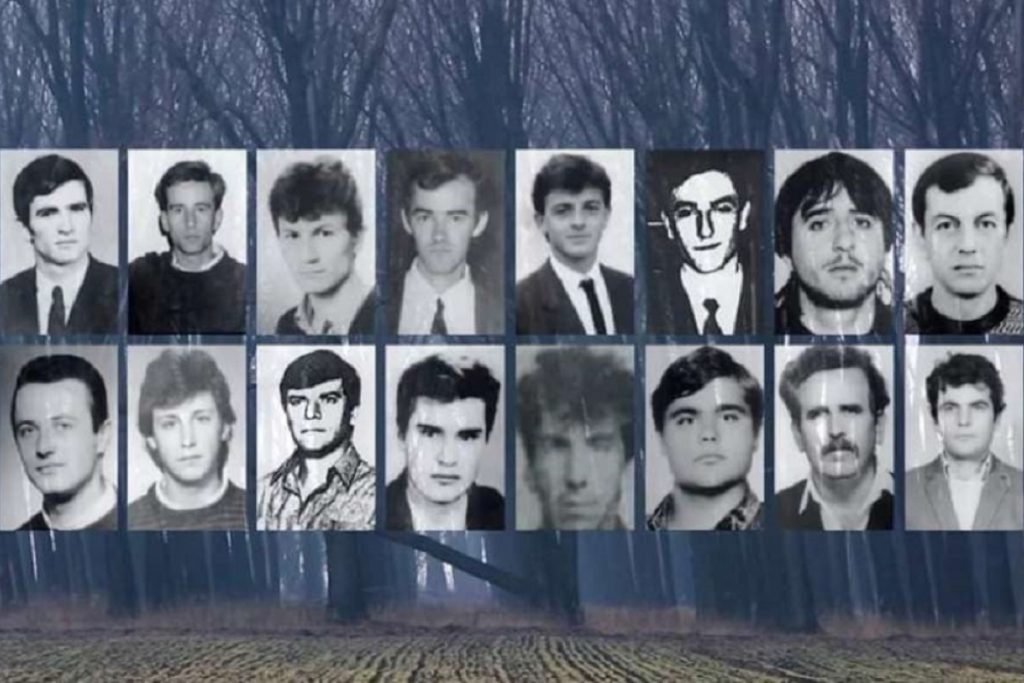The Battle of the Rosinjača Forest, one of the most heroic, tragic yet little known events of the Homeland War took place on 5 December 1991.
Following heavy artillery, the Yugoslav People’s Army (YPA) and Serbian Chetnik paramilitary units set out on a final assault to conquer the city of Osijek. A general armoured and infantry attack was strongest where it was least expected – at Rosinjača. a forest located on the southern approach to the city of Osijek. As an attack by the Serb aggressors was not expected from that direction, only about 50 troops from the 106th Osijek Brigade of the Croatian Army were stationed in the Rosinjača forest.
Sixteen Croatian soldiers died during an uneven three-hour battle in which the Croats attempted to stop the advance of the much stronger enemy who was supported by an armoured mechanized battalion. Their sacrifice was not in vain, however, as their resistance delayed the enemy long enough to allow the consolidation of defenses on the southern approach to Osijek, thus saving the city from occupation. Its citizens recall the 5th of December as “D-Day” as a total of 26 members of the 106th Osijek Brigade of the Croatian Army were killed holding the approaches to the city in the defense of Osijek.
Salko Ahmić, Ivica Babaja, Pavao Begonja, Stjepan Ezer, Damir Farago, Berislav Genčić, Zoran Gnjatović, Ivan Hap, Zoran Kišasondi, Siniša Knežević, Mladen Milanković, Davor Milas, Matija Olujić, Ivan Sekanić, Goran Stjepanović and Mihajlo Pelegrin laid down their lives during the battle for Rosinjača and Pelegrin’s remains have yet to be found. The youngest of them, 18-year-old Davor Milas was a student who was to graduate that year and in memory of his sacrifice, his school was named the “Davor Milas” Trade and Commercial School.
The retrieval of the dead Croatian soldiers was secretly planned over the course of seven days. Scouts from the Frankopan Battalion Special Unit of the General Staff surveyed the terrain for days and finally decided to begin the operation overnight on 12 December. In pitch darkness, they made their way in the extreme cold through frozen land, cornfields and dangerous minefields and arrived at Rosinjača before dawn. Croatian television cameraman Mario Romulić accompanied them at his own risk and recorded the mission but his superiors refused to broadcast the footage and claimed that it would demoralize Croatian troops.
There were no words to describe the scenes witnessed by Croatian soldiers upon arrival at the site of the tragedy. Their bodies were riddled with bullets and it appeared that some had been wounded prior to being killed by additional gunfire at close range. As the bodies were collected, scouts from the Frankopan Battalion kept guard as the enemy was nearby and the murmuring sound of tank engines had reached the forest. One of the defenders who took part in mission recalled the event:
We couldn’t carry them as their bodies were frozen, so we wrapped them in tent canvas and the only thing we could do was drag them out. The worst was going through the cornfield and as the sun rose at dawn, an unpleasant odor appeared as their bodies thawed out.
Magistar sam povijesti. Radno iskustvo stjecao sam u Hrvatskom povijesnom muzeju i na Hrvatskoj radioteleviziji u emisiji TV Kalendar. Autor sam nekoliko knjiga i filmova na temu Domovinskog rata. Osnovao sam i uređujem Facebook stranicu Dogodilo se na današnji dan – Domovinski rat i portal Domovinskirat.hr. Također uređujem i vodim emisiju Domoljubne minute koja se svakog dana emitira na Hrvatskom katoličkom radiju te emisiju Sve za Hrvatsku i Novi valovi dobrote. Vlasnik sam obrta CroHis kojim promičem vrijednosti Domovinskog rata.

